Mass demonstrations in Tehran and other cities continued into the small hours of Saturday for the eighth consecutive night tonight since the killing in custody of 22-year-old Mahsa Amini.
Fresh protests continued at Tehran University on Saturday after unprecedented sceens in the capital the night before. At around 2am local time, huge crowds in Tehran had been seen cheering and even dancing after pushing security forces into a retreat. Chants of "Don't be afraid, we are all together" were heard in the capital and other cities last night.
Iranians in #Tehran celebrate as police officers retreat from their positions during #IranProtests2022 (Tehran, Sept 24)#Mahsa_Amini #mahsamini #IranProtests #IranRevolution pic.twitter.com/MBWA6vQybA
— IranWire (@IranWireEnglish) September 24, 2022
#فوری
— Truske Sadeghi (@truskesadeghi) September 23, 2022
تهران، دقایقی قبل.#اعتراضات_سراسرى #OpIran pic.twitter.com/PhqqBoBQpF
Large gatherings and protests broke out in the early evening in Tehran's Shariati Street neighborhood, near the Sadr Bridge, as well as on Valieasr Street near Parkway Bridge, Niavaran Street, and the Sattar Khan and Tehransar neighborhoods. Women set their headscarves on fire and chanted "Death to the dictator".
#تهران،
— Masih Alinejad 🏳️ (@AlinejadMasih) September 24, 2022
مردم نمی خوابند امشب..#مهسا_امینی pic.twitter.com/VEY3rwWcyN
Despite the heavy deployment of riot police and security forces, protests in Tehran on Friday night appeared to be some of the biggest so far. Huge crowds were still demonstrating in the city center long past midnight, with those tasked with breaking them up seemingly outnumbered.
ویدیوی دریافتی از "صادقیه #تهران، ۱ مهر"#مهسا_امینی #IranProtests pic.twitter.com/ZzYSYg77cv
— Vahid Online (@Vahid) September 23, 2022
Major demonstrations took place in other cities across Iran on Friday night. Videos posted online showed large crowds had gathered again and stopped traffic in Isfahan, while in the Kurdish-majority city of Oshnavieh in West Azerbaijan province, as well as Marvdasht in Fars province, activists reported that large parts of the cities had been taken over by protesters.
#فوری #اصفهان همین الان
— Reihaneh fallah (@FallahReihaneh) September 23, 2022
جمعه شب #مهسا_امینی #OpIran #MahsaAmini pic.twitter.com/eV867Etm9g
ویدیوی دوم از #اشنویه را هم ببینید! فراموش نشدنی هستند روزهایی که شهر به تصرف مردم در آمده
— Soma(yeh) (@S0MAyyeh) September 23, 2022
این مردم آمده اند تا تغییری بررگ را رقم بزنند و دارند با همه زبانی میگویند که نمیترسند، که میجنگند، که میمانند و تاریخ ساز می شوند...#مهسا_امینی #Mahsa_Amini pic.twitter.com/5wroIdCZYU
Protesters in Marvdasht in Fars province have taken control of the streets despite the violent repression and internet shutdown.#IranProtests#MahsaAmini pic.twitter.com/hE8yMkoMtR
— Arash Sadeghi (@Arash_sadeghii) September 23, 2022
Demonstrations and direct confrontations with security forces also continued in the city of Rasht in northern Iran, in Gohardasht, a neighborhood in Karaj, and in Mashhad. Some footage of these and other protests was published online despite internet throttling by the government for the third night in a row.
رشت امشب اول مهر #مهسا_امینی pic.twitter.com/bViPERSzyh
— +۱۵۰۰تصویر (@1500tasvir) September 23, 2022
Hossein Razzaq, a political prisoner in Evin Prison, told IranWire by phone that detainees in Iran's most notorious jail had also gathered on Friday night to denounce mandatory hijab in Iran.
Iran Human Rights: Known Death Toll Now Stands at 50
The Oslo-based observatory Iran Human Rights reports that it has been able to verify the deaths of at least 50 people in 80 cities linked to the protests last Friday.
The update came within hours of Iranian official news agencies putting the count at 35, including security personnel, up from 17 the day before.
Among those killed have been bystanders as well as people actively taking part in the demonstrations. According to data gathered by Iran Human Rights, so far the highest number of reported killings have taken place in Babol, Amol and Rezvan Shahr, which are all situated in the north of Iran.
A source in Rezvan Shahr told researchers: “At least six people were killed as a result of direct fire by security forces on Thursday night. Three of them were Farzin Lotfi, Sasan Ghorbani and Yasin Jamalzadeh. Farzin Lotfi was shot dead outside the police station. Yassin Jamalzadeh was a father of two."
The organization is still investigating but said on Friday that internet shutdowns were hampering its efforts. Director Mahmood Amiry-Moghaddam said: "Condemnation and expressions of concern are no longer enough. The international community and anyone that adheres to human rights principles, must now support the Iranian people’s demands.”
Ebrahim Raisi: Protestors 'Misunderstood'
As the protests were ongoing, the semi-official ISNA News Agency reported that Ebrahim Raisi was back in Tehran from the UN General Assembly in New York. On Friday night Raisi gave a speech to regime loyalists gathered at Mehrabad Airport in which he claimed Iran's "enemies" were trying to "create chaos".
رئیسی در جمع مردم:
— خبرگزاری ایسنا (@isna_farsi) September 23, 2022
*دشمنان میخواهند سوار موجی شده و ایجاد بلوا و اغتشاش کنند
*فکر میکنند با این حرکات ملت را میتوانند متوقف کنند
*ما حرف و اعتراض را میشنویم اما کسی زیر بار اغتشاش نخواهد رفت
*در هیچ شرایطی اجازه نخواهیم داد امنیت مردم به مخاطره بیفتد pic.twitter.com/yxvRvrrfkM
“If someone has something to say, it will be heard,” he declared. “But we will not accept disturbances to the security of the country, the security of the people.”
In defiance of evidence on the ground, he claimed the demonstrations were “organized” and “not related to Mahsa Amini; some people used this matter as an excuse to create unrest in the country. This case caused some people to misunderstand, and to get emotionally involved, with those looking for chaos.”
ISNA's own webpages appeared to be down on Friday night and redirected to its Twitter page. Earlier this week a large number of Iranian government-affiliated websites, including the official sites of the president and Supreme Leader, were hijacked by the hacktivist consortium Anonymous.
The same line – that the protests were “organized” – was repeated by Interior Minister Ahmad Vahedi in a statement earlier on Friday evening.
Vahidi also openly confirmed that the government was wilfully blocking Iranians’ access to the internet. He said this was being done to “maintain the security and peace of the people” and “so that the protesters cannot organize”.
He continued: “Anyway. These disturbances will end. But some people failed this test and the judicial system will deal with the violators."
Supreme Leader Ali Khamenei is understood to be ill and convalescing, and has not publicly acknowledged the protests personally or via a spokesperson. The ultraconservative Iranian newspaper Kayhan, whose editor-in-chief is appointed by Khamenei, has called the mostly young demonstrators “extremists”.
Internet Throttling Continues
Mobile access to the World Wide Web was down in major cities of Iran last night for the third night in a row. Despite this, some footage of the demonstrations found its way online many Iranians managed to connect through the use of VPNs and censorship circumvention software.
At the same time, citizens reported a sinister new tool in the security forces' digital arsenal: a Telegram channel, Setad-114, in which citizens were being asked to inform on and identify people taking part in the protests. On Friday afternoon this apparently state-sponsored "snitch line" had more than 11,000 subscribers.
The regime also blocked the official website of Starlink, an internet satellite constellation provided by Elon Musk's SpaceX, on Friday. It came shortly after the US Treasury announced it was widening the range of internet services permitted to Iran under sanctions, paving the way for Starlink to potentially be expanded to cover the country.
visit the accountability section
In this section of Iran Wire, you can contact the officials and launch your campaign for various problems




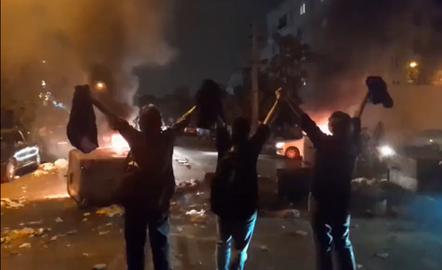
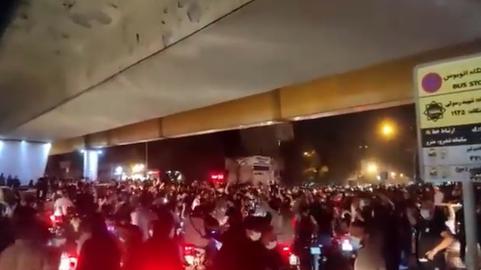





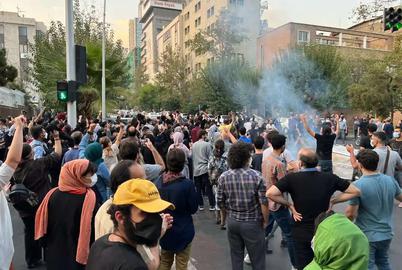
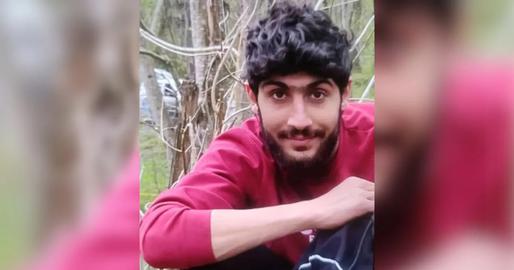
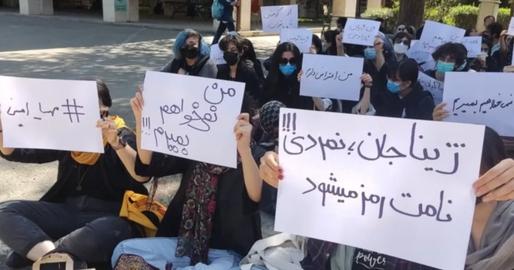
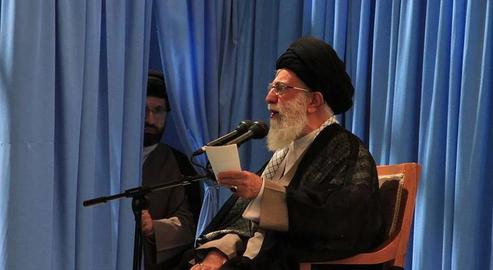










comments